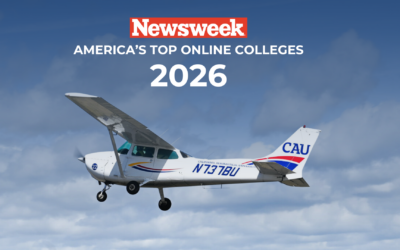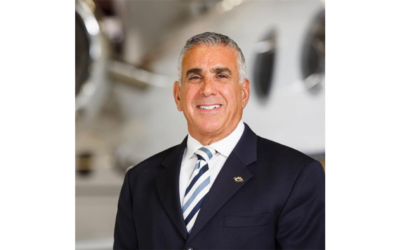
United Airlines’ operations at Newark Liberty International Airport have rebounded from cutbacks triggered by runway construction and congestion, according to the carrier, which said it is ready for the planned weekend closures this fall for additional construction.
“We don’t expect any operational impact as a result of that construction work that is scheduled to take place,” said United VP for Newark Jon Gooda to BTN on July 11 of the planned weekend work on runway 4L-22R scheduled for September through December.
“There’s a slightly reduced schedule on a Saturday for us in the evening already as a natural process, and the airport has been really good about working overnight Saturday into Sunday,” Gooda said.
United’s operations at Newark, a key hub for the carrier, were under the gun in late April and May when IT outages that affected the air traffic control system for the airport coincided with a runway construction closure that started in April. In addition, following the IT outage, some air traffic controllers took leaves of absence. Delays mounted. United CEO Scott Kirby on May 2 announced a temporary reduction of 35 flights per day at Newark to ease the congestion.
The U.S. Federal Aviation Administration by May 20 ordered flight movements at the airport to be reduced to 56 per hour through June 15, when the runway was scheduled to open for departures, and then 68 movements per hour until Oct. 25.
United in summer 2024 operated about 395 daily departures from Newark. The carrier already had reduced 2025 operations due to the runway closure, and after the additional 35 flights were cut, it was operating about 293 departures per day, according to the airline. In May, Newark departures were down about 22 percent year over year, with capacity down 15 percent; in June, departures were down 17 percent versus June 2024 with capacity down 9 percent.
To minimize disruptions when determining which 35 flights to cut, the Newark operations team looked at markets with very high frequency, Gooda said, pointing to frequency reductions for destinations like Orlando, Fla., “where we fly many times a day.”
“We reduced some of those frequencies,” he said, also pointing to such markets as Las Vegas, Washington, D.C., and Boston. “We did not take out flights where we fly one time a day to a certain city.”
Meanwhile, the U.S. Department of Transportation worked with the airport and Port Authority of New York and New Jersey to increase construction time to around the clock. The result was that the closed runway reopened on June 2, nearly two weeks ahead of schedule.
As of June 26, United had restored its daily departures to about 380. To date, July departures are down 3 percent year over year, with capacity down 1 percent compared with July 2024, according to the carrier.
Aiding Corporate Customers
While the Newark challenges were at their peak in May, United SVP of worldwide sales Doreen Burse coincidentally was meeting with the carrier’s corporate advisory board.
“We suggested a multi-pronged approach to communication,” Burse said. “We scheduled a number of webinars to bring together and assemble a number of experts. They talked to us about air travel, safety and reliability. They talked to us about the collaboration with the FAA and other entities on that matter overall. And then we opened it up for Q and A. We received a lot of feedback that we were not only open and transparent, but we were proactive about getting in front of what we believed were concerns.”
Further, Gooda and his team at Newark began to host in-person tours of the facilities and operations.
“They got to see our control center; they also got to meet some of our team members,” Gooda said. “They got to experience the full range of our operation and ask a lot of questions.”
United is continuing to offer those sessions, Gooda said.
The carrier also reached out to customers who live near and use Newark regularly to explain what was happening and provide links to additional resources, Gooda said.
Burse also met with United’s travel agency advisory council around that time, and said she told them, “Here’s our communication strategy; here are the updates. What other thing do you think based on the questions you’re being asked by your passengers or by your counselors that you think we need to include?” she said. “It was really well-rounded, robust, customer-centric and fueled by that feedback that allowed us to get out in front of the situation and communicate accurately and proactively and transparently in a way that has been very well-received.”
Next Steps for Newark
When asked what would happen at the end of October when the FAA’s caps for Newark end, Gooda said that Kirby and members of the carrier’s executive leadership team are working with DOT Secretary Sean Duffy, but that “we do not have clear guidance of what will happen at the end of October.”
Kirby has been vocal about his desire for the FAA to once again include Newark as a Level 3 slot-controlled airport, like New York’s LaGuardia and John F. Kennedy International airports. That designation would help limit the departures all carriers would be allowed, which could help with congestion and keep hourly movements to airport capacity. Newark’s Level 3 designation expired in 2016.
Newark specifically was named as a fund recipient in the recent Trump administration mega bill passed on July 4 and which included $12.5 billion to improve the country’s air traffic control system.
Recent Posts
- California Aeronautical University named a top online college for 2026
- Premier Aircraft announces it has been appointed as the North American Platinum Distributor for New Diamond Aircraft Parts
- Jet Access welcomes aviation industry veteran David Deitch as Executive Vice President of Sales
- Daher’s environmental efforts are recognized with a “Leadership” rating from the CDP organization
- EAA announces air show performers for AirVenture Oshkosh 2026







Recent Comments